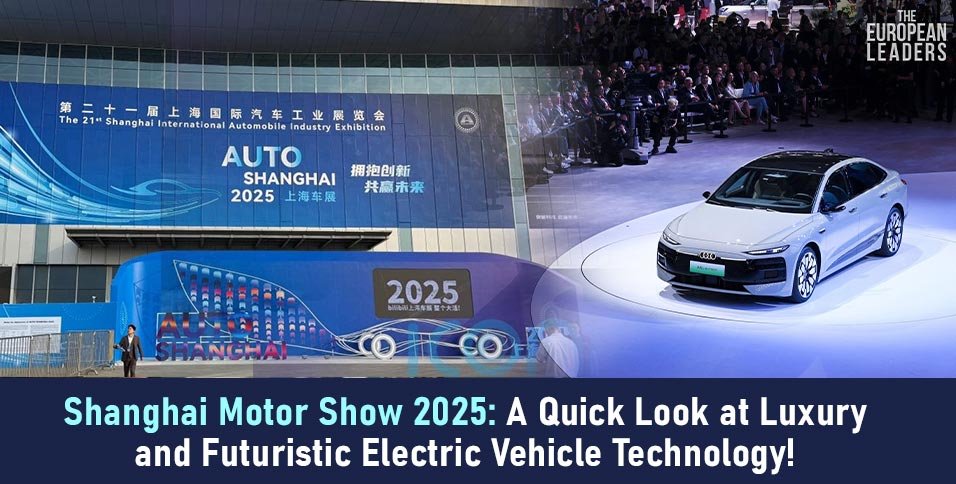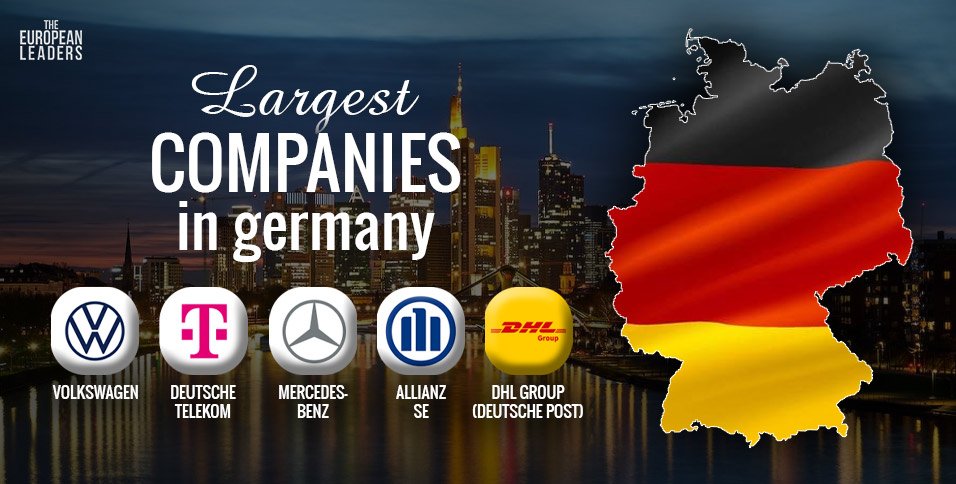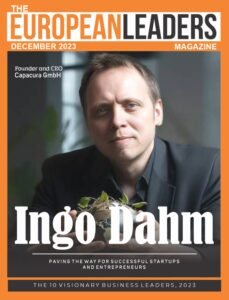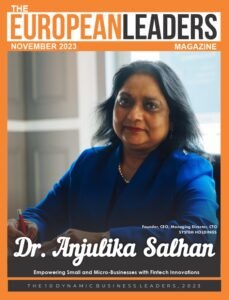The European Leaders
24 April 2025
Shanghai – If you want a glimpse into the future of mobility, particularly electric vehicles, there was only one place to be recently: Shanghai. The Shanghai Motor Show 2025, officially known as the 21st Shanghai International Automobile Industry Exhibition, wasn’t just a showcase of shiny new cars; it was a powerful statement about where the global automotive industry is heading, with China firmly in the driver’s seat.
This sprawling event, occupying over 360,000 square metres of the National Exhibition and Convention Centre, brought together nearly 1,000 companies from 26 countries, highlighting everything from groundbreaking vehicle concepts to the complex supply chains that build them.
Held from the 23rd of April to the 2nd of May, with dedicated press and trade days before opening to the public, the show buzzes with innovation. But beyond the dazzling displays, what were the key takeaways for businesses and anyone keeping an eye on this crucial sector?
A Global Stage with Local Power
Spanning over 360,000 square metres and welcoming nearly 1,000 companies from 26 nations, Shanghai Motor Show 2025 has cemented its reputation as the East’s premier automotive exhibition.
Yet, while international giants continue to participate, the event is undeniably a celebration of Chinese ingenuity. Homegrown giants such as BYD, Nio, and Li Auto showcased not only their strength but also their strategic evolution through sub-brands, supercar ambitions, and accessible EV offerings for the masses.
One of the most talked-about unveilings was BYD’s Denza Z, an electric supercar concept with a potential 1,000 horsepower. Paired with aggressive styling and lightning-fast charge times, it signalled China’s arrival in the elite performance EV club.
Anticipated Debuts: From Supercars to Smart Sedans
The buzz across the halls was undeniable. Audi’s new E5 Sportback, launched under its SAIC joint venture, stole headlines with an 800V architecture and sleek, China-exclusive styling. Meanwhile, the ONVO L90, a family SUV from Nio’s sub-brand offered battery-swap compatibility and generous cabin space, answering China’s rising middle-class appetite for upscale utility.
BMW’s showcase stood as a testament to localisation. The German marque unveiled its Neue Klasse models tailored for China, with intuitive Panoramic iDrive displays and the AI-powered “Heart of Joy” central computing system.
Nearby, Volkswagen’s ID. EVO concept pushed connected-car boundaries, leveraging China-specific design cues and integrated tech ecosystems.
Sub-Brands and Newcomers Drive Market Niche Play
From Xiaomi’s debut EV lineup to BYD’s off-road focused Fang Cheng Bao, Auto Shanghai 2025 was a playground for sub-brand experimentation. Firefly, a new entry from Nio targeting cost-conscious urban drivers, turned heads with a sleek EV priced at just ¥119,800 underscoring the Chinese strategy of scale and segment ownership.
These offerings weren’t just about aesthetics or performance they represented business models grounded in innovation and localisation. With battery-swap infrastructure, 800V fast-charging, and bespoke cockpit software tailored for Mandarin-speaking users, the market has matured to meet consumer demand at every level.
Global Brands: Adapting to the Chinese Playbook
German powerhouses led with technical precision. Audi’s E5 Sportback boasted dual motors capable of 765 kW, while BMW’s Vision M test car achieved F1-like lateral G-forces. Both firms prioritised China-first strategies BMW even confirmed 70% of its upcoming vehicle software will be locally developed, with production centred in Shenyang.
Japanese automakers, while slower to electrify, showed fresh urgency. Toyota’s bZ7 and Honda’s Ye series exemplified strategic joint ventures and market-specific platforms. Nissan’s plug-in hybrid pickup, launched alongside the Dongfeng Nissan N7, was pitched as part of a broader 2027 China roadmap.
Key Trends Defining Shanghai Motor Show 2025
- NEV Domination: Electric and hybrid models ruled the halls, reflecting China’s clear ambition to phase out combustion engine dominance.
- Localised AI and UX: From Alibaba partnerships to voice command optimisation, user experience is now a competitive differentiator.
- Sub-Brand Surge: Automakers are using sub-brands to unlock niche segments whether it’s for budget buyers, off-road enthusiasts, or luxury commuters.
- Supply Chain Integration: Industry titans like Bosch, CATL, Sony, and Intel showcased their contributions to smarter, faster EV platforms.
- Family-Centric Features: From swivel seats to 7-seat layouts and child safety features, automakers are responding to the ’smart family car’ movement.
German Engineering with a Local Twist: BMW and Audi Go All-In
Among the most captivating showcases at the Shanghai Motor Show 2025 was BMW, which unveiled its Neue Klasse EVs tailored specifically for the Chinese market. With its expansive 5,000-square metre booth, BMW brought not just future-forward electric vehicles but also heritage models like the 1960s BMW 1500 — subtly reinforcing its legacy in innovation.
Key BMW Highlights:
- Neue Klasse Sedan and SUV – China-tailored EVs with cutting-edge design and digitalisation.
- Panoramic iDrive – Built with Alibaba and DeepSeek AI, offering predictive features and seamless voice commands.
- Heart of Joy Central Computer – Processes driving data 10x faster, paving the way for next-gen performance.
Meanwhile, Audi, through its joint venture with SAIC, introduced its first China-exclusive sub-brand with a performance EV to match:
Key Audi Highlights:
- Audi E5 Sportback – Dual-motor EV built on 800V architecture,
- Power: 579 kW
- Acceleration: 0–100 km/h in 3.4 seconds
- Joint showcase with FAW and SAIC – Demonstrating Audi’s dual strategy to stay agile in China.
Japanese Brands Push Practicality and Partnerships
While German marques dazzled with performance, Japanese automakers focused on efficiency, innovation, and co-development.
Key Toyota and Lexus Highlights:
- Toyota bZ7 – Co-developed with GAC;
- Length: 5 metres
- Specialty: Smart cockpit designed for China
- Lexus ES BEV (next-gen) – Inspired by the LF-ZC concept with ultra-quiet interiors and luxury feel.
Key Honda Highlights:
- Honda Ye Series – A new China-exclusive electric series with refined local features and updated battery tech.
- Key Nissan Highlights:
- Dongfeng Nissan N7 – A sleek EV part of Nissan’s push to launch 9 new NEVs by 2027.
- Nissan Frontier Pro (PHEV) – Rugged plug-in hybrid pickup appealing to adventure and utility markets.
Final Thoughts on Shanghai Motor Show 2025
The Shanghai Motor Show 2025 confirms what industry watchers have long predicted: China is no longer a follower in the automotive world; it is setting the pace. For business audiences, the implications are profound. Supply chains must adapt.
Tech partnerships must localise. And global automakers must rethink their China strategies not as export markets, but as design and innovation centres in their own right.
As the dust settles on this year’s show, one thing is certain: the road ahead for mobility runs through Shanghai and it’s electric, intelligent, and unmistakably ambitious.







